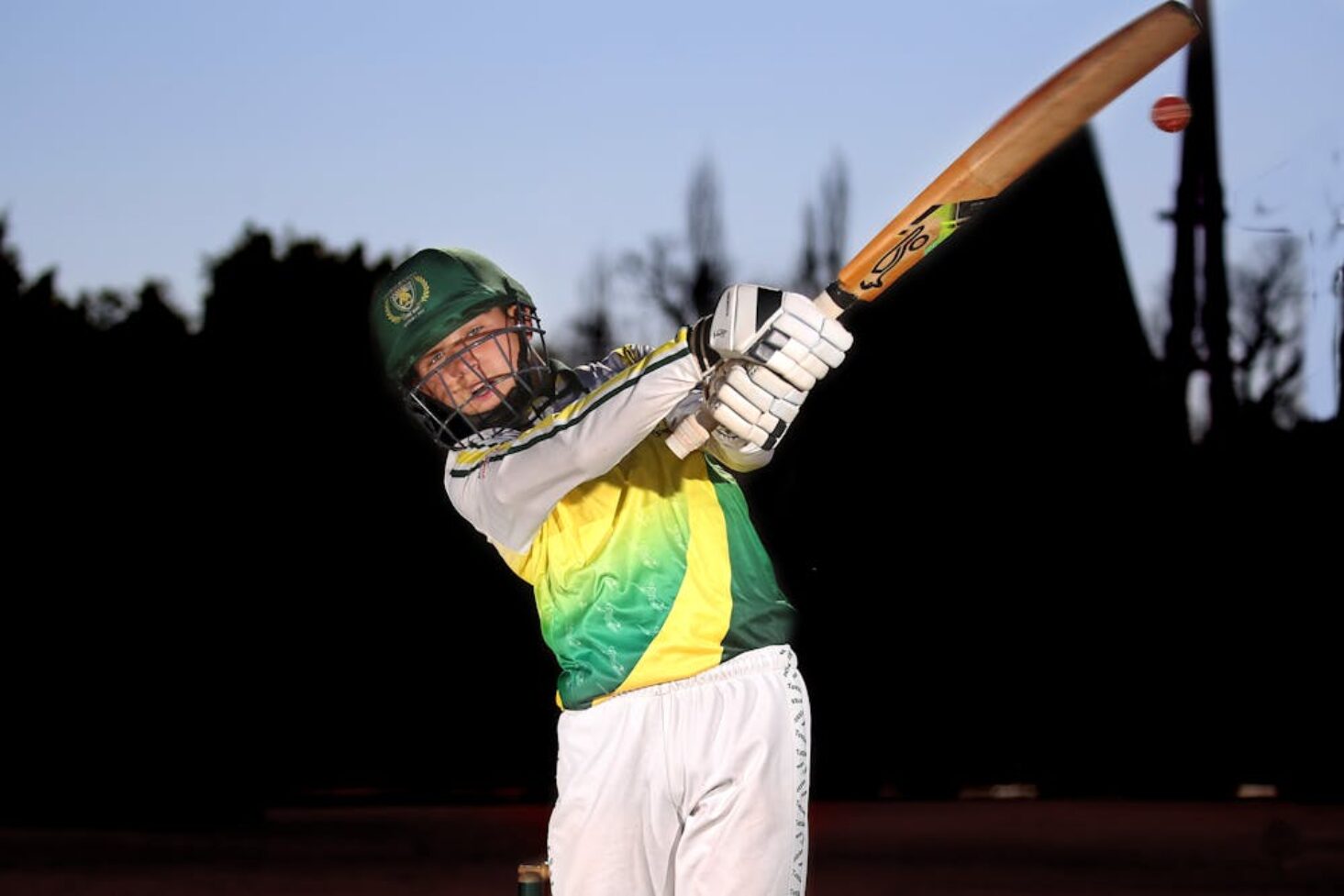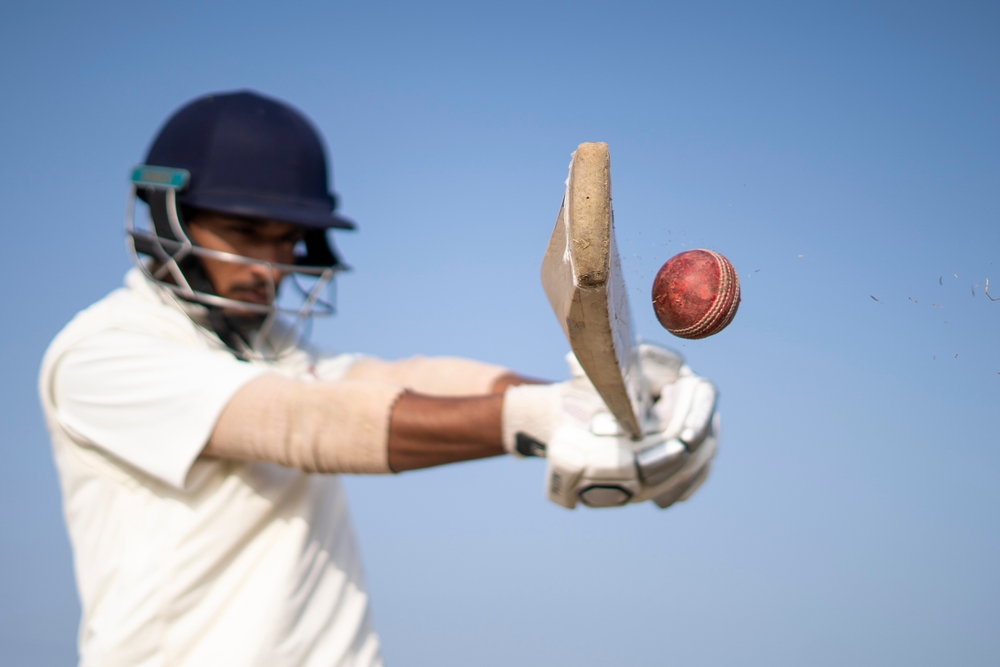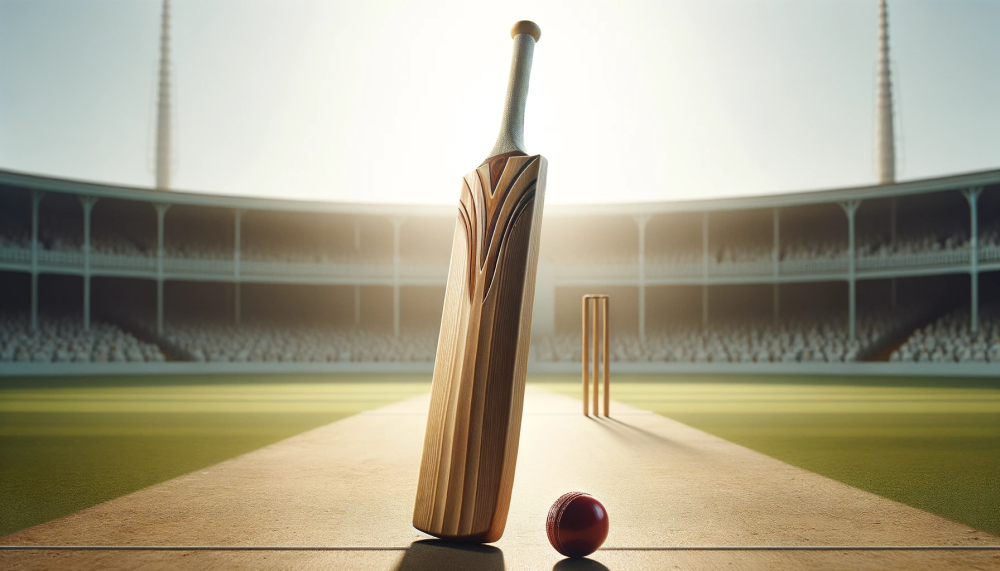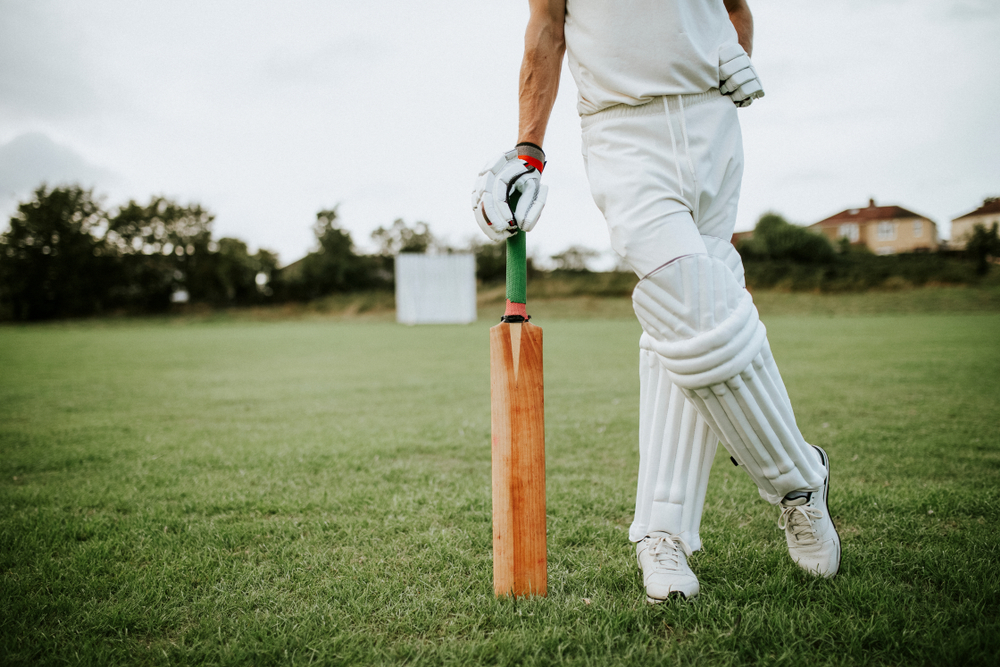
How to Choose the Right Cricket Bat Size
Choosing the right cricket bat size is essential for any cricketer since the sport began, as it directly impacts their performance and overall playing experience. The right-sized bat allows for better control, shot execution, and power generation. When selecting a cricket equipments – specially cricket bats, various factors need to be considered, including understanding cricket bat sizes, the player’s age, height, batting style, weight, handle, willow grade, blade profile, sweet spot position, toe shape, and bat’s balance.
To ensure you make the right choice, it’s important to have a thorough understanding of these factors and how they influence the bat’s suitability for the player. Knowing how to measure a cricket bat and being aware of standard sizes, different willow grades, blade profiles, toe shapes, sweet spot positions, handle types, and factors to consider during selection will further aid in making an informed decision. By taking these factors into account, players can find a cricket bat that perfectly suits their requirements and enhances their performance on the field.
Choosing the Right Cricket Bat Size
To understand cricket bat sizes is essential for players of all ages and skill levels. In order to choose the correct size cricket bat, it is important to have a understanding of the various sizes available and how they relate to the height and age of the player.
Choosing the right bat size is crucial for achieving optimal performance and technique. A bat that is too heavy or too small can hinder shot effectiveness. It is recommended to try different bat sizes to find one that is comfortable and suits the player’s style. Considering age and height will facilitate development and maximize potential on the field.
Having an understanding of cricket bat sizes is essential for players of all ages and skill levels. By selecting the correct bat size, players can improve their performance, refine their technique, and derive maximum enjoyment from the game.
Consider the Player’s Age
When considering the appropriate cricket bat size, it’s crucial to take into account the age of the player. There are several factors to consider:
Physical development: If the player is young and still growing, they may require smaller and lighter bats to handle them effectively and minimize strain or injury.
Strength and power: Older players might need larger and heavier bats to generate more power and hit the ball harder.
Technique and skill level: Less experienced players can benefit from using lighter bats to work on their technique and improve their skills. On the other hand, more skilled players may prefer heavier bats that suit their playing style.
Bat control: It’s important to choose a bat that is not excessively heavy for the player’s age and abilities. This ensures good control and overall performance.
Pro-tip: For players under 12 years old, it is recommended to use bats between 25-27 inches in length. Older players can opt for bats ranging from 28-34 inches. It is crucial to test out different bat sizes and seek advice from coaches or experienced players to find the perfect fit.
Consider the Player’s Height
When choosing a cricket bat, it is crucial to take into account the height of the player. The player’s height directly impacts the ideal size of the bat. Several factors need to be considered:
Player’s height: In order to improve reach and balance, taller players generally require longer bats. For players between 4’9″ and 5’3″ (145cm-160cm), it is recommended to use bats approximately 30-32 inches (76cm-81cm) long. On the other hand, players above 5’3″ (160cm) can opt for bats measuring 32-34 inches (81cm-86cm).
Player’s physical strength: Apart from height, physical strength also plays a role in bat selection. Stronger players can handle slightly heavier bats. When determining the bat’s weight, it is important to consider muscle development and strength.
Playing style: The choice of bat size is influenced by different playing styles. Players with an upright stance benefit from longer handles as they provide better control. On the other hand, players who adopt a crouched or aggressive style are better suited for bats with shorter handles.
omfort and maneuverability: When playing shots, players should feel comfortable and be able to easily maneuver the bat. The weight and balance of the bat should be taken into consideration for optimal performance.
By considering the player’s height and these factors, it is possible to select the appropriate-sized cricket bat and enhance performance on the field.
Consider the Player’s Batting Style

To select the suitable size cricket bat, one must take into consideration the player’s batting style. Different batting styles require different bat sizes to achieve optimal performance and technique.
Considering the player’s batting style is crucial as it determines the type of shots they are likely to play.
For example, power hitters who aim to score quickly would benefit from a bat with a larger hitting area, such as a short handle or size 6 bat.
On the other hand, players with a defensive or technique-driven style would benefit from a bat that offers better reach and control, like a long handle or size 5 bat.
Similarly, players who rely on their front foot or back foot for shots should choose a bat that complements their dominant foot.
Understanding the player’s batting style and selecting the appropriate bat size can greatly enhance their performance, allowing them to play to their strengths and optimize their gameplay.
Historically, cricket bats have evolved to cater to the changing needs of players and the sport itself. The earliest bats resembled hockey sticks, but as the game progressed, bats were designed to suit various playing styles. The size and weight of the bat were standardized to ensure fair play and equal opportunity for all players.
Check the Bat’s Weight
When selecting a cricket bat, it is crucial to check the weight of the bat. Please adhere to the following steps:
- Determine the bat’s weight: Prior to making a purchase, grasp the bat and evaluate its weight. It should feel comfortable and well-balanced.
- Take the player’s age and strength into account: Younger or weaker players may prefer a lighter bat, whereas older and stronger players may opt for a heavier one.
- Examine the weight range: Each bat has a specified weight range. Ensure that it falls within the appropriate range for the player’s age and strength.
- Assess the pickup: The pickup refers to the bat’s feel when swung. Some bats may feel lighter or heavier in action. Test how the bat responds when playing shots.
- Consider the playing conditions: Different conditions may require different bat weights. Lighter bats are generally favored on faster pitches, while heavier bats may be more suitable for slower pitches.
- Seek advice from a coach or experienced players: Consult with coaches or experienced players who can offer guidance in selecting the appropriate bat weight based on your playing style and physique.
By taking the weight of the bat into consideration and following these steps, you can choose the suitable cricket bat for your game.
Inspect the Handle

When choosing a cricket bat, you should inspect the handle. Here are the steps:
1. Check the grip: Ensure that the grip is in good condition and provides a secure hold. Look for any signs of wear or tear.
2. Assess the weight: Hold the bat by the handle to determine how comfortable and balanced it feels.
3. Examine the material: Cricket bat handles can be made of willow or composite materials. Willow handles offer a natural feel and are also durable.
4. Look for any cracks or damage: Inspect the handle for any cracks, splits, or other damage that could affect its performance.
5. Consider the shape: The shape of the handle can affect your grip and control. Choose a shape that feels comfortable and suits your playing style.
When inspecting the handle of a cricket bat, it is important to prioritize quality and durability. A well-maintained handle will enhance your performance on the field.’
Consider the Willow Grade
When selecting the appropriate size cricket bat, it is important to consider the grade of the willow. The performance of the bat is greatly influenced by the quality of the willow used. Here are the steps to consider the willow grade:
1. Look for the grade stamp: Check for a grade stamp on the bat, usually located on the back of the blade. This stamp indicates the quality of the willow and helps differentiate between various grades.
2. Take English willow into account: Professional players prefer English willow due to its durability and performance. It is graded based on the number of grains on the face, with higher grades having more grains.
3. Evaluate the grade: Different brands may have their own grading systems, but higher grades such as Grade 1+ or Grade 1 will have fewer flaws and more evenly distributed grains.
4. Consider Kashmir willow: Kashmir willow is a more affordable option compared to English willow, suitable for casual or recreational players. Although it may not offer the same level of performance, it can provide a satisfactory playing experience.
5. Inspect the willow: Examine the willow closely. Look for knots, cracks, or imperfections that could impact the bat’s durability and performance. Choose a bat with clean and evenly distributed grains.
Fact: English willow bats are meticulously handmade using traditional techniques, ensuring that each bat is a unique work of craftsmanship.
Consider the Blade Profile

When selecting a cricket bat, it is crucial to consider the blade profile. The blade profile plays a significant role in determining the shape and size of the bat’s surface. Various factors should be taken into account, including the thickness, width, concavity, edge thickness, and toe thickness.
Thicker surfaces are ideal for strong hitters as they offer greater power. On the other hand, wider surfaces provide an enlarged sweet spot, leading to improved contact with the ball. If maneuverability and quick hand movements are important to you, consider a bat with a deeper concavity. Keep in mind that bats with thicker edges offer more power but also tend to be heavier.
In terms of durability and strength, a cricket bat with a thicker toe is recommended. It is essential to consider all these factors carefully in order to choose a cricket bat that suits your playing style and preferences.
Consider the Sweet Spot Position
When considering a cricket bat, it is vital to take into account the placement of the sweet spot. The sweet spot, which refers to the specific point on the bat, is where you should aim to strike the ball in order to generate maximum power and control. The position of the sweet spot can vary depending on the size and weight of the bat.
Typically, the sweet spot is located in the middle of the bat. This area offers the optimal position for generating power and directing the ball. Bats with a larger sweet spot provide more forgiveness when making slightly off-center contact.
When choosing a bat size, it is important to consider the placement of the sweet spot. Depending on your height and strength, you may prefer a bat with a lower sweet spot for maximum power or a higher sweet spot for improved control. It is beneficial to experiment with different bat sizes to find one that feels comfortable and suits your playing style.
The weight distribution of the bat also affects the position of the sweet spot. Bats with a lower sweet spot concentrate more weight in the lower part, while bats with a higher sweet spot distribute the weight evenly. Take into consideration your preferred weight distribution and how it impacts consistently making contact with the sweet spot.
Consider the Toe Shape

When selecting the toe shape of a cricket bat, it is important to take into account various factors. Choose the appropriate toe shape based on your playing style and personal preferences.
When deciding on the toe shape, it is important to consider your playing style. If you are an aggressive batsman who relies on power hitting, a square toe shape may be suitable. If you value control and precision, an oval or round toe shape would be more beneficial.
Take into consideration the condition of the pitch. On softer pitches, a round or oval toe shape helps prevent the bat from digging into the ground. On harder pitches, a square toe shape can provide additional strength and durability.
Ultimately, the selection of the appropriate toe shape for your cricket bat is a personal choice. Consider your playing style, pitch conditions, and personal preferences to determine the ideal toe shape.
Consider the Bat’s Balance

Factors to take into account for the balance of the bat:
1. Weight Distribution: The balance of a cricket bat is determined by how its weight is distributed. It is important to concentrate the weight towards the middle or slightly towards the blade to achieve better control and manoeuvrability during shots.
2. Pick-up: The pick-up of a bat, referring to how it feels in the hands while swinging, plays a crucial role. A well-balanced bat has good pick-up, feeling light even if it is slightly heavier. This allows the batsman to generate more power with less effort.
3. Sweet Spot: The sweet spot, which is the area on the blade where the ball makes optimal contact with the bat, is an important aspect to consider. A bat with a well-balanced sweet spot has a larger effective hitting area, giving the batsman an advantage in scoring runs.
4. Blade Thickness: The thickness of the blade can impact the balance of the bat. While a thicker blade offers more power, it may sacrifice some balance. Power hitters often prefer bats with slightly thicker blades, while stroke players favor bats with thinner blades for better balance.
5. Handle Flexibility: The flexibility of the handle also influences the balance of the bat. A more flexible handle provides better control and balance, enabling the batsman to play shots with precision. Some players may prefer a stiffer handle for more power.





